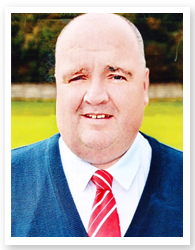All children and young people who require it should access Child and Adolescent Mental Health Services (CAMHS) at the team local to where they live. Within CAMHS services there are additional supports for children and young people who have a learning disability, whose experiences of adversity past and present have resulted in complex trauma, or who have forensic mental health needs. This supports CAMHS teams in working with these vulnerable groups of children and enables equitable access to mental health services for these children and young people.
The Tier 4 Hub is a specialist service that works with children and young people (0-18 years) at greatest risk and who require a period of intensive assessment and intervention and/or specialist intervention. We work with children and young people with mental health disorders and who have
- Learning disabilities and/or
- Experience of complex trauma and/or
- Severe conduct or offending behaviour (Forensic).
The Tier 4 Hub become involved at the request of their colleagues in the locality of CAMHS.
We are based at
Floor 1 Building 3 Templeton Business Centre
62 Templeton Street
Glasgow
G40 1DA
Telephone 0141 201 0808
Learning Disabilities
Young people with a learning disability may have difficulties in understanding situations, in expressing themselves, or have fewer opportunities to learn about becoming older and more independent. They can have the same mental health problems as other young people who do not have learning disabilities, but these might look different, be more difficult to detect, and need interventions and treatments that are adjusted to suit individual needs.
Children and young people with learning disabilities, and their families and carers, can expect CAMHS to make reasonable adjustments to enable them to be helped by CAMHS. This might be having an appointment at home rather than in a clinic, having a longer appointment time, using playing and drawing instead of talking, working with parents and carers and others instead of directly with the child, joining with the family, school, health services provided through the school, social work services, etc. in reviews or discussions to think together about the difficulties and how best to help.
The learning disability clinicians in CAMHS are experienced in working with children and young people and with people with learning disabilities and can help with ideas and suggestions about how to understand and tackle problems. This might be working directly with families and other agencies, or supporting their CAMHS colleagues to work with children and young people affected by learning disability.
Some learning disabilities clinicians are based in the local CAMHS teams and others in the ‘Tier 4 HUB’. They are a multi-disciplinary team with skills in learning disability child and adolescent mental health and challenging behaviour (Consultant Child and Adolescent & Learning Disability Psychiatry; Registered Learning Disability Nursing; Clinical Psychology; Speech and Language Therapy; Occupational Therapy; Clinical Support Worker).
Complex Trauma
‘Trauma’ is a widely used term, but in this context it refers to: an event which is exceptionally threatening or catastrophic and is likely to cause distress for almost everyone.
Complex trauma is when these traumatic events are repeated and interpersonal (inflicted by other people). This includes childhood sexual abuse, childhood physical abuse, witnessing domestic abuse, war and neglect. Please note this is not an exhaustive list.
Children and young people with a complex trauma history can develop mental health difficulties which may lead to them presenting in CAMHS.
The Complex Trauma Pathway aims to support our colleagues in the locality CAMHS teams to provide a trauma sensitive approach to their input with young people who have a complex trauma history. As well as provide specialist input directly to young people and their families where needed.
Forensic Child and Adolescent Mental Health Services (FCAMHS)
Information for Young People
What is FCAMHS?
We work with young people who are going through a hard time. You might be getting into trouble with the police and having problems with your mental health.
We have a psychiatrist, speech and language therapist, occupational therapist, psychotherapists and psychologists on our team.
Who comes to FCAMHS?
We see young people under the age of 18. Some have been charged with a serious offence. Some are involved with the police or youth justice social work. Some are in secure care.
What can I expect if I see FCAMHS?
You might already be coming to CAMHS. If you are, your CAMHS worker will introduce us. We can see you at your local CAMHS team. Sometimes we might see you somewhere else e.g. if you are in secure care. When we meet we will tell you about our service. We will also want to find out more about you. We want to listen to you. Then we decide together if we are the best team for you.
What happens when I come to FCAMHS?
We listen to you and talk about the problems you are having. We work with you to understand why you are getting into trouble. We speak with people who know you well. We want to understand how to keep you and other people safe. We work with teachers, social workers and secure care staff to help us think about the best way to keeping you safe and out of trouble.
What else might happen?
We will ask you to fill out a form when we first meet. You might also have to fill out a form at the end. We do this to see if our team is working well. We might ask you what you thought of working with us. We want to know how we can improve.
How can I get help from FCAMHS?
If you are being seen by CAMHS your worker might ask FCAMHS to see you. If you are in secure care then your GP or Social Worker might ask FCAMHS to see you. If you go to ISMS (Glasgow City Council’s Intensive Support and Monitoring Service), then your ISMS worker will ask you to meet with FCAMHS.
Information for Professionals
Who are we?
FCAMHS was developed following a review of the needs of young people who are involved in serious offending behaviour across Greater Glasgow and Clyde (GG&C). We now sit as part of the Tier 4 CAMHS hub, alongside work-streams for complex trauma, and intellectual disability.
The service is a multi-disciplinary team, consisting of Psychology, Psychiatry and a Social Worker. We also have access to Speech and Language Therapy, Occupational Therapy, and Psychotherapy. Unlike the other work-streams, FCAMHS do not have link-nurses. We have therefore, been working to establish links with Tier 3 teams across GG&C.
FCAMHS also consists of commissioned services who offer direct access to children in Secure Care, or children accessing the Glasgow City Council Intensive Support and Monitoring Service (ISMS)
Who is the service for?
We offer a provision for young people up to age 18 living within the GG&C area who have moderate to severe mental health difficulties, and who present a significant risk of harm to others by means of physical or sexual violence or fire-setting. Typically, these are complex cases requiring intensive MDT working and assertive outreach, that may outstrip Tier 3 resources.
What do we do?
We can provide specialist assessment of risk, using structured professional judgement approaches, which are evidenced-based and recommended by the Risk Management Authority.
We support those working with young people to understand the development and maintenance of offending behaviour. This subsequently underpins a holistic ‘Whole Systems’ intervention and care plan to reduce risk.
We can provide assessment and intervention for serious and chronic mental disorder, particularly when this is associated with risk. We also offer interventions focussing on reducing offending.
We support colleagues in Tier 3 CAMHS, by providing specialist training in relation to forensic issues.
We routinely evaluate our services, as well as developing clinical research projects.
How to request assistance.
Requests for assistance come from locality CAMHS teams. All requests are addressed to the Tier 4 Hub. In order to do this, you can contact the FCAMHS duty clinician to discuss. We will request initial assessment and risk (FACE CARAS) reports. We will discuss within weekly Tier 4 referral meeting and the case will be allocated if accepted.
If you are referring for a child not known to GG&C CAMHS, but who is residing in Secure Care, then a referral form can be requested from the unit and sent to:
F.CAMHS@ggc.scot.nhs.uk
All referrals from secure care should be discussed with the child, their consent sought and also sent to the above email address. Both referral and consent forms can be obtained from the secure units.




